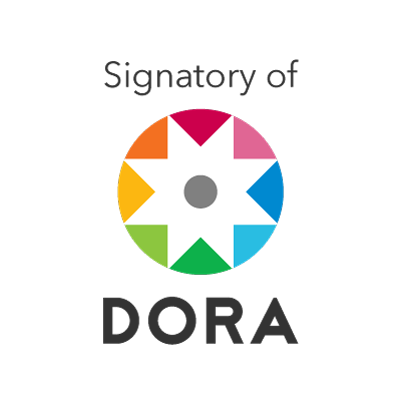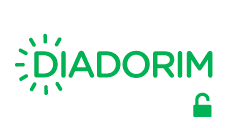Audiodescrições didáticas intersemióticas e interlinguais
algumas aplicações para o ensino e aprendizagem de L1 e L2
DOI:
https://doi.org/10.1590/1983-3652.2025.56776Palavras-chave:
Tradução audiovisual, Tradução audiovisual didática, Audiodescrição didática, Audiodescrição intersemiótica didática, Audiodescrição interlingual didáticaResumo
A audiodescrição (AD) é uma modalidade de tradução audiovisual (TAV) e de acessibilidade midiática voltada principalmente para usuários com deficiência visual. Tradicionalmente, a AD tende a utilizar imagens e sons como texto de partida para a criação do roteiro de AD (texto de chegada), sendo, por isso, considerada uma tradução intersemiótica. No entanto, alguns pesquisadores têm se debruçado sobre a viabilidade teórica de optar pela tradução interlingual de roteiros de AD para outros idiomas. Além disso, pesquisas têm explorado a combinação da TAV com o ensino e aprendizagem de línguas, um campo de estudos conhecido como “tradução audiovisual didática”, com ramificações como, por exemplo, a audiodescrição didática (ADD). Neste trabalho, argumenta-se que a ADD precisa considerar tanto a natureza linguística quanto a aplicação prática da AD para melhor diferenciar o potencial didático da AD intersemiótica do potencial didático da AD interlingual, já que elas possuem aplicações distintas no ensino e aprendizagem de L1 e L2. Mais especificamente, a AD intersemiótica parece ser mais adequada para o aprendizado de L1, por exemplo, para consolidar estruturas gramaticais, revisar textos, desenvolver habilidades de escrita e oralidade, aprender sobre variações linguísticas da L1 etc. Por outro lado, a AD interlingual pode ser usada para aprender vocabulário e gramática da L2, desenvolver habilidades de oralidade e escrita em língua estrangeira, desenvolver habilidades tradutórias, entre outras possibilidades. Em suma, considerando o potencial da ADD para o ensino e aprendizagem de línguas, sugere-se que essa linha de pesquisa seja ampliada e aprofundada por meio de outras combinações e aplicações de seus usos em diferentes contextos linguísticos e educacionais.
Downloads
Referências
AENOR. Norma UNE 153020. Audiodescripción para personas con discapacidad visual. Requisitos para la audiodescripción y elaboración de audioguías. [S. l.]: AENOR, 2005.
AGULLÓ, Belén; MATAMALA, Anna. Subtitling for the deaf and hard-of-hearing in immersive environments: results from a focus group. The Journal of Specialised Translation, n. 32, p. 217–235, 2019.
AUDIO DESCRIPTION COALITION. Standards for Audio Description and Code of Professional Conduct for Describers based on the training and experience of audio describers and trainers from across the United States. [S. l.]: Audio Description Coalition, 2009.
ÁVILA-CABRERA, José Javier. TeenTitles. Implementation of a methodology based on teenage subTitles to improve written skills. In: SANDERSON, John; BOTELLA-TEJERA (eds.). Focusing on audiovisual translation research. [S. l.]: Publicacions Universitat de València, 2018. p. 19–40.
BARTOLINI, Chiara; MALDINA, Eleonora. The implementation of museum audio description in foreign language education: A pilot study. Parallèles, n. 36, 2024. DOI: 10.17462/para.2024.01.08.
BAUSELLS-ESPÍN, Adriana. Audio description as a pedagogical tool in the foreign language classroom: An analysis of student perceptions of difficulty, usefulness and learning progress. Journal of Audiovisual Translation, n. 5, p. 152–175, 2022. DOI: 10.47476/jat.v5i2.2022.208.
BELENGUER CORTÉS, Luz. The role of accessibility in language teaching: Respeaking in the foreign language classroom. Parallèles, n. 36, 2024. DOI: 10.17462/para.2024.01.09.
BORGHETTI, Claudia; LERTOLA, Jennifer. Interlingual subtitling for intercultural language education: A case study. Language and Intercultural Communication, n. 14, 2014. DOI: 10.1080/14708477.2014.934380.
BOURNE, Julian; JIMÉNEZ HURTADO, Catalina. From the visual to the verbal in two languages: A contrastive analysis of the audio description of *The Hours* in English and Spanish. In:
CINTAS, Jorge Díaz; ORERO, Pilar; REMAEL, Aline (eds.). Media for all: Subtitling for the deaf, audio description and sign language. [S. l.]: Rodopi, 2007. p. 175–187.
CALDUCH, Carme; TALAVÁN, Noa. Traducción audiovisual y aprendizaje del español como L2: El uso de la audiodescripción. Journal of Spanish Language Teaching, n. 4, 2018. DOI: 10.1080/23247797.2017.1407173.
CALIFORNIA AUDIO DESCRIBERS ALLIANCE. Audio Description Standards. [S. l.]: California Audio Describers Alliance, 2009.
CHAUME, Frederic. Cine y traducción. [S. l.]: Cátedra, 2004.
CHAUME, Frederic. Audiovisual Translation: Dubbing. [S. l.]: St Jerome Publishing, 2012.
CHAUME, Frederic. An overview of audiovisual translation: Four methodological turns in a mature discipline. Journal of Audiovisual Translation, n. 1, p. 40–63, 2018. DOI: 10.47476/jat.v1i1.43.
COMMISSION), ITC (Independent Television. Guidance on Standards for Audio Description. [S. l.]: ITC, 2000.
DÍAZ-CINTAS, Jorge. Subtitling’s a carnival: New practices in cyberspace. The Journal of Specialised Translation, n. 30, 2018.
FERNÁNDEZ-COSTALES, Alberto. Subtitling in CLIL: Promoting bilingual methodologies through audiovisual translation. In: MINISTERIO DE EDUCACIÓN, Cultura y Deporte (ed.). Bilingual education: Trends and key concepts. [S. l.]: Ministerio de Educación, Cultura y Deporte, 2017.
GARCÍA-MUÑOZ VIZCAÍNO, Sheila; DÍAZ ALARCÓN, Soledad. Subtitling for the Deaf and Hard-of-Hearing as a Didactic Tool in the Classroom. In: PLAZA-LARA, Cristina; MAR OGEA-POZO, María del; BOTELLA-TEJERA, Carla (eds.). Empirical Studies in Didactic Audiovisual Translation. [S. l.]: Routledge, 2024. p. 26–46.
HARMER, Jeremy. The Practice of English Language Teaching. [S. l.]: Pearson, 2019. HEIJDEN, Mereijn van der. Film en televisie toegankelijk voor blinden en slechtzienden. 2007. MA thesis – Utrecht School of Arts.
HERRERO, Carmen; ESCOBAR, Manuela. A pedagogical model for integrating film education and audio description in foreign language acquisition. Translation and Translanguaging in Multilingual Contexts, n. 4, p. 30–54, 2018. DOI: 10.1075/ttmc.00003.her.
HYKS, Veronica. Audio description and translation. Two related but different skills. Translating Today, n. 4, p. 6–8, 2005.
IBÁÑEZ MORENO, Ana; VERMEULEN, Anna. Audio description as a tool to improve lexical and phraseological competence in foreign language learning. In: TSAGARI, Dina; FLOROS, Georgios (eds.). Translation in Language Teaching and Assessment. [S. l.]: Cambridge Scholars Publishing, 2013. p. 41–64.
IBÁÑEZ MORENO, Ana; VERMEULEN, Anna. The ARDELE Project: Controlled empirical research on audio description as a didactic tool to improve (meta)linguistic competence in foreign language teaching and learning. In: DÍAZ-CINTAS, Jorge; NIKOLIĆ, Kristijan (eds.). Fast-forwarding with Audiovisual Translation. [S. l.]: Multilingual Matters, 2017.
ISO/IEC. ISO/IEC TS 20071-21. Information technology — User interface component accessibility — Part 21: Guidance on audio descriptions. [S. l.: s. n.], 2015.
JAKOBSON, Roman. On linguistic aspects of translation. In: BROWER, Reuben Arthur (ed.). On Translation. [S. l.]: Harvard University Press, 1959. p. 232–239.
JANKOWSKA, Anna. Translating audio description scripts. Translation as a new strategy of creating audio description. [S. l.]: Peter Lang, 2015.
LÓPEZ VERA, Juan Francisco. Translating audio description scripts: The way forward? Tentative first stage project results. In: MUTRA 2006 Audiovisual Translation Scenarios: Conference Proceedings. [S. l.: s. n.], 2006. Available from: https://www.euroconferences.info/proceedings/2006_Proceedings/2006_Lopez_Vera_Juan_Francisco.pdf.
MANGIRON, Carme. Audiovisual translation and multimedia and game localization. In: ZANETTIN, Federico; RUNDLE, Christopher (eds.). The Routledge Handbook of Translation and
Methodology. [S. l.]: Routledge, 2022. p. 410–424.
MEJÍAS-CLIMENT, Laura. Enhancing Video Game Localization Through Dubbing. [S. l.]: Palgrave Macmillan, 2021.
MORISSET, Laure; GONANT, Frédéric. Charte de l’audiodescription. Principes et orientations. [S. l.]: Ministère des Affaires Sociales, 2008.
NAVARRETE, Marga. El doblaje como herramienta de aprendizaje en el aula de español y desde el entorno Clipflair. MarcoELE, n. 16, 2013.
NAVARRETE, Marga. The use of audio description in foreign language education. A preliminary approach. Translation and Translanguaging in Multilingual Contexts, n. 4, p. 129–150, 2018. DOI: 10.1075/ttmc.00007.nav.
NAVARRETE, Marga. Converting semiotic signs into a linguistic code: Implications for language learners’ oral skills. Parallèles, n. 36, 2024. DOI: 10.17462/para.2024.01.06.
NETFLIX. Audio Description Style Guide (v2.5). [S. l.]: Netflix, 2024.
NEVES, Josélia. Translation and accessibility. The translation of everyday things. In: ZANETTIN, Federico; RUNDLE, Christopher (eds.). The Routledge Handbook of Translation and Methodology. [S. l.]: Routledge, 2022. p. 441–456.
O’HAGAN, Minako. The Impact of New Technologies on Translation Studies: A Technological Turn? In: MILLÁN, Carmen; BARTRINA, Francesca (eds.). The Routledge Handbook of Translation Studies. [S. l.]: Routledge, 2013.
PÉREZ-GONZÁLEZ, Luis. Rewiring the circuitry of audiovisual translation. In: PÉREZ-GONZÁLEZ, Luis (ed.). Routledge Handbook of Audiovisual Translation. [S. l.]: Routledge, 2019. p. 1–12.
REMAEL, Aline. Audiovisual Translation. In: GAMBIER, Yves; DOORSLAER, Luc van (eds.). Handbook of Translation Studies. [S. l.]: John Benjamins, 2010.
REMAEL, Aline; VERCAUTEREN, Gert. The translation of recorded audio description from English into Dutch. Perspectives: Studies in Translatology, n. 18, p. 155–171, 2010. DOI: 10.1080/0907676X.2010.485684.
ROMERO-MUÑOZ, Alejandro. Linguistic variation and audio description. Dialect and register in L1 Spanish students. In: TAMAYO, Ana; IRAVEDRA, Marta (eds.). La fuerza de la traducción creativa y cultural. [S. l.]: Comares, 2025. in press.
SÁNCHEZ-REQUENA, Alicia. Intralingual dubbing as a tool for developing speaking skills. Translation and Translanguaging in Multilingual Contexts, n. 4, p. 101–128, 2018. DOI: 10.1075/ttmc.00006.san.
SCHAEFFER-LACROIX, Eva. Integrating corpus-based audio description tasks into an intermediate-level German course. International Journal of Applied Linguistics, n. 31, p. 1–20, 2020. DOI: 10.1111/ijal.12294.
SNYDER, Joel. The Visual Made Verbal: A Comprehensive Training Manual and Guide to the History and Applications of Audio Description. [S. l.]: American Council of the Blind, 2014.
SOKOLI, Stravoula. Exploring the possibilities of interactive audiovisual activities for language learning. Translation and Translanguaging in Multilingual Contexts, n. 4, 2018. DOI: 10.1075/bct.111.ttmc.00005.sok.
TALAVÁN, Noa. La subtitulación en el aprendizaje de lenguas extranjeras. [S. l.]: Octaedro, 2013.
TALAVÁN, Noa. Creative audiovisual translation applied to foreign language education: A preliminary approach. Journal of Audiovisual Translation, n. 2, p. 53–74, 2019. DOI: 10.47476/jat.v2i1.57.
TALAVÁN, Noa. The didactic value of AVT in foreign language education. In: BOGUCKI, Łukasz; DECKERT, Mikołaj (eds.). The Palgrave Handbook of Audiovisual Translation and Media Accessibility. [S. l.]: Palgrave Macmillan, 2020. p. 567–591.
TALAVÁN, Noa; COSTAL, Tomás. iDub - The potential of intralingual dubbing in foreign language learning: How to assess the task. Language Value, n. 9, 2017. DOI: 10.6035/LanguageV.2017.9.4.
TALAVÁN, Noa; LERTOLA, Jennifer. Active audio description to promote speaking skills in online environments. Sintagma, n. 27, 2016.
TALAVÁN, Noa; LERTOLA, Jennifer; FERNÁNDEZ-COSTALES, Alberto. Didactic audiovisual translation and foreign language education. [S. l.]: Routledge, 2024.
TALAVÁN, Noa; LERTOLA, Jennifer; IBÁÑEZ, Anna. Audio description and subtitling for the deaf and hard of hearing media accessibility in foreign language learning. Translation and Translanguaging in Multilingual Contexts, n. 8, p. 1–29, 2022. DOI: 10.1075/ttmc.00082.tal.
VANDERPLANK, Robert. Captioned media in foreign language learning and teaching: Subtitles for the deaf and hard-of-hearing as tools for language learning. [S. l.]: Springer, 2016.
Downloads
Publicado
Edição
Seção
Licença
Copyright (c) 2025 Alejandro Romero-Muñoz

Este trabalho está licenciado sob uma licença Creative Commons Attribution 4.0 International License.
Este é um artigo em acesso aberto que permite o uso irrestrito, a distribuição e reprodução em qualquer meio desde que o artigo original seja devidamente citado.











